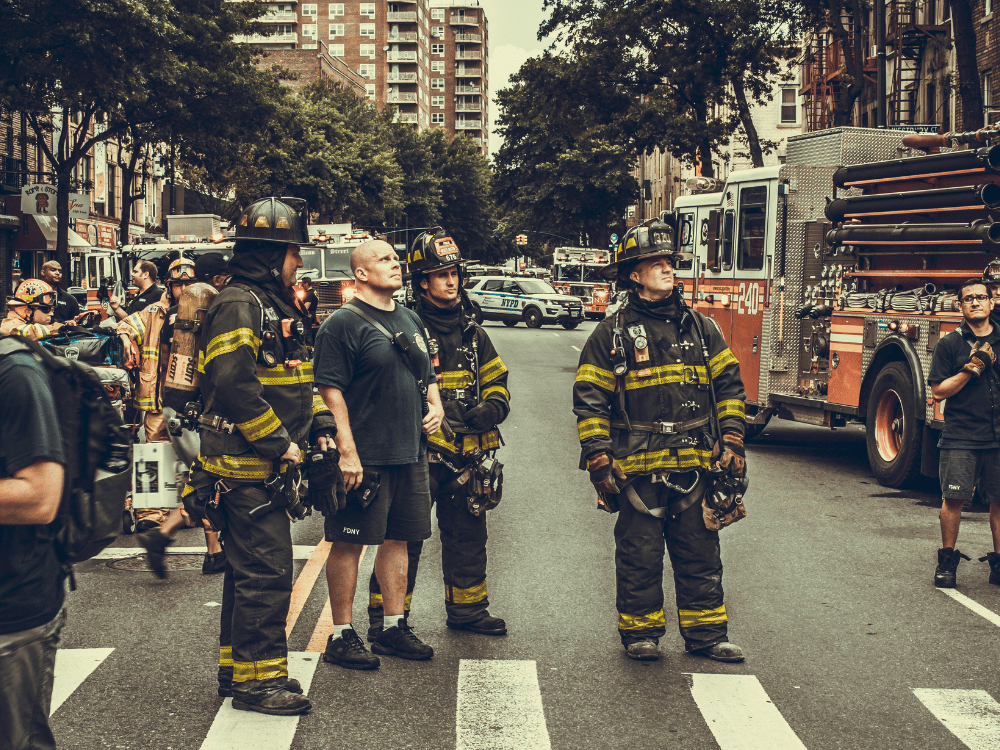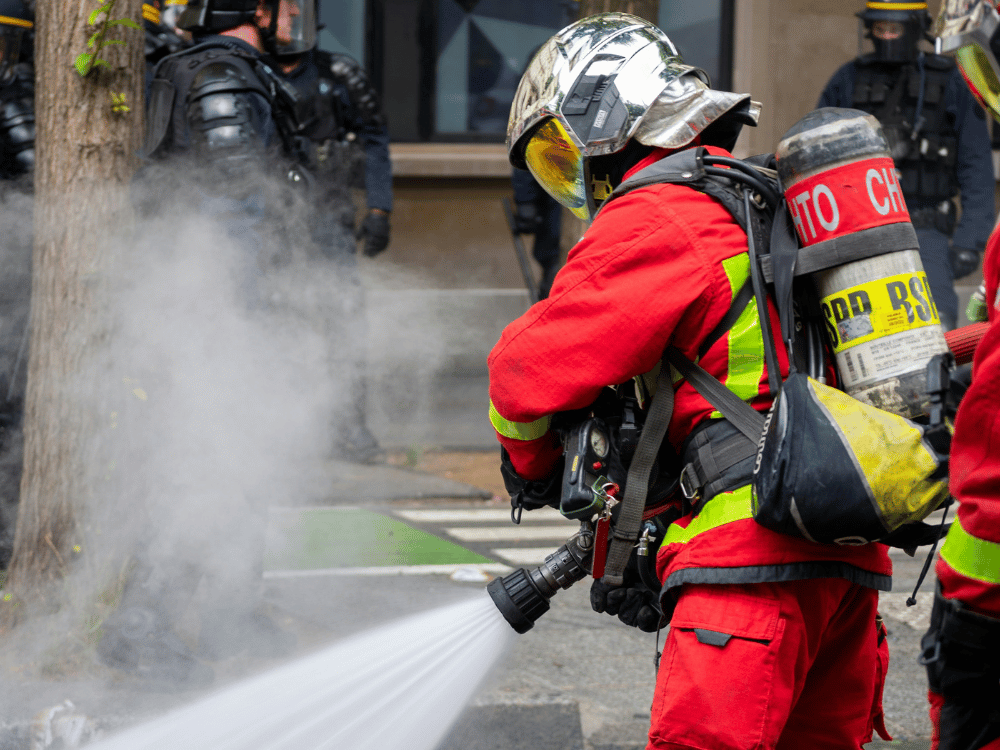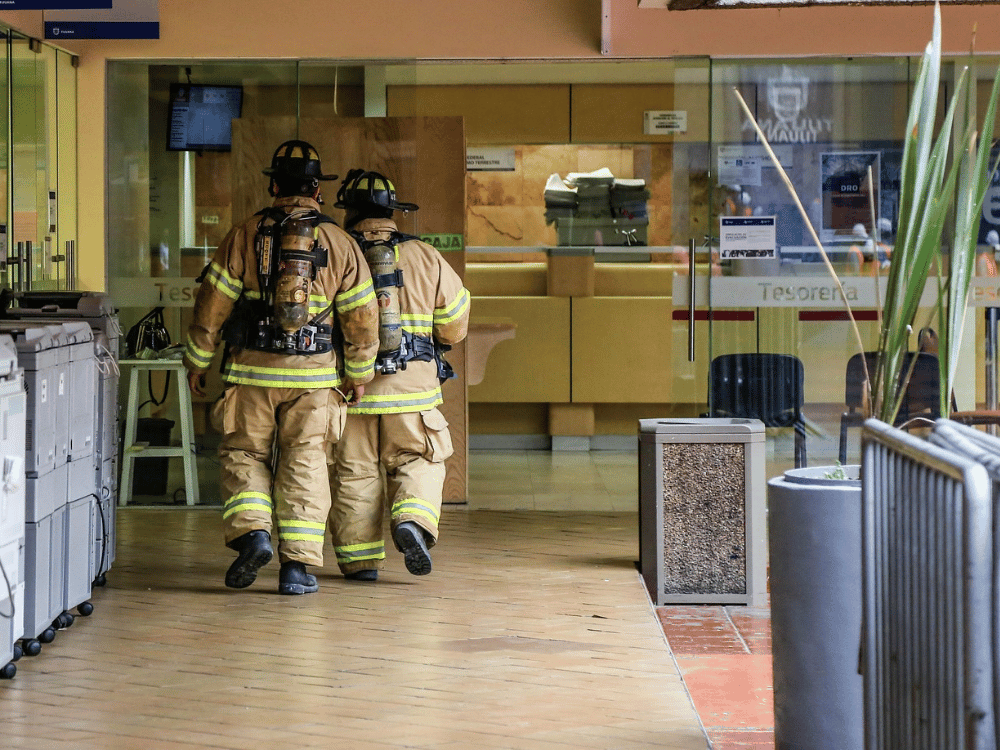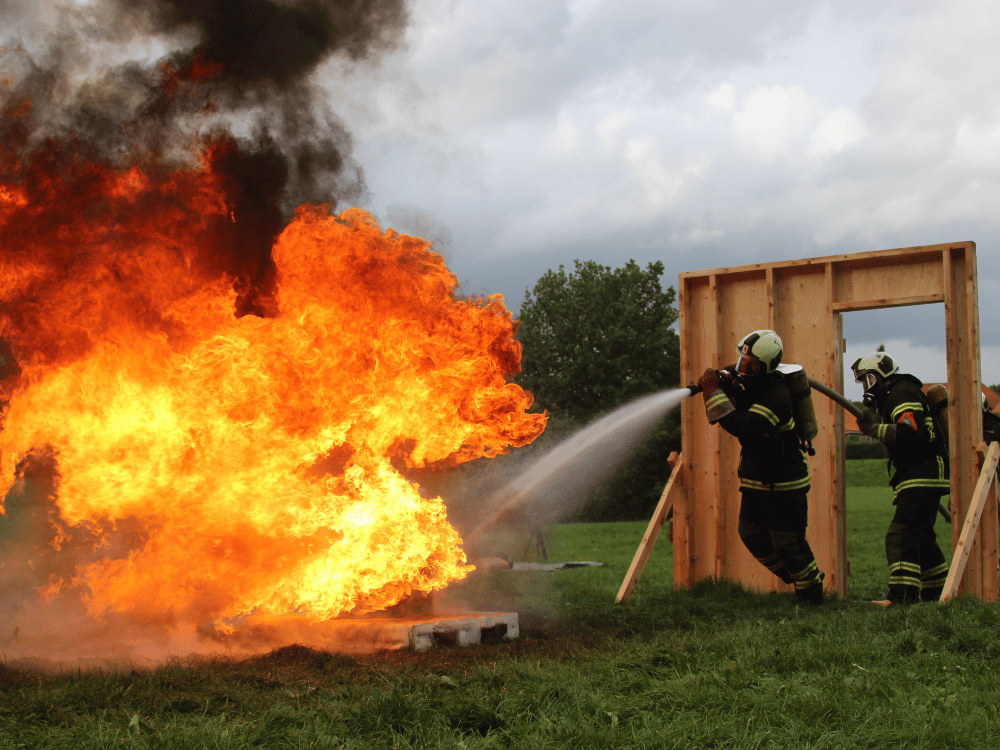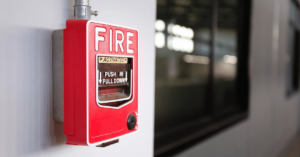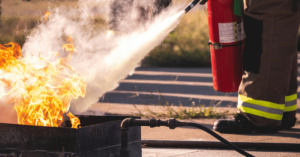Of the 66,251 primary fires across the UK in 2023, 20% occurred in non-domestic settings.
For clarity, primary fires are classed as blazes that:
- Occur in non-derelict buildings, vehicles, or outdoor structures.
- Involved a fatality, casualty, or rescue.
- Are attended by five or more pumping appliances.
Those stark numbers show that fires are still an all-too-familiar risk in the workplace.
But how significant is the problem? What are the most common causes of fire in the workplace? And how can fire safety courses from TSW Training instill knowledge surrounding the prevention of flames spreading?
We’ll cover all of that shortly. But first, let’s take a look at a few more sobering stats from the world of workplace fires.
Interesting UK Fire Statistics in the Workplace
When it comes to businesses, the leading cause of fire in the UK is faulty or misused electrical equipment.
In fact, of the 22,000 workplace fires recorded every year (on average), 25% share this source.
But it’s not just people that are affected by fires in the workplace. The financial implications for a business are incredibly profound, too.
Numbers released by the UK Government highlight that the average cost of a fire to businesses is around £78,000. That’s without considering preventative costs or damages incurred through punitive actions following a blaze.
To that end, if there is a fire on your premises and you are found non-compliant with The Regulatory Reform (Fire Safety) Order 2005 (Fire Safety Order), there is no maximum, and you could even find yourself behind bars.
Most Common Causes of Fire in the Workplace
As we mentioned earlier, electrical faults are most prolific when it comes to potential ignition sources. But other common causes of workplace fires include:
- Obstructed vents
- Electrical fires
- Improper storage of flammable materials
- Negligence and lack of training
- Smoking
- Arson
- Tidiness
- Substandard safety measures
Let’s take a look at each of these in detail:
1. Obstructed Vents on Electrical Equipment
Obstructed ventilation areas are a serious hazard. Whether through dust or other larger objects, when airflow to equipment like fans or vents is blocked, this can cause heat to build.
In this instance, the dry fibrous make-up of dust can act like fuel to a spark or flame.
Information regarding internal airflow systems, their outlays, and the importance of regular maintenance can be included in your Fire Strategy Plan.
Additionally, your staff safety training should include guidance around how and why to keep ventilation areas clear of clutter. More on that later.
2. Electrical Fires in the Workplace
Around 33% of UK workplace fires happen due to electrical issues. But what are the common causes of electrical fires?
- Faulty or loose wiring
- Damaged cables
- Faulty or aged equipment
- Static electricity sparking flammable substances
- Arcing (when electricity jumps from one circuit to another)
- Overloaded circuits
Under the guidance of the Electricity at Work Regulations 1989, you should schedule regular Electrical Inspection Condition Reports (EICR) as the business owner or responsible person.
These crucial checks, conducted roughly every five years, give your building’s electrics a thorough once over.
3. Improper Storage of Flammable Materials
Flammable materials are items, objects or liquids that may combust immediately after coming into contact with flame or intense heat.
Locations like petrol stations, laboratories, cleaning facilities or manufacturing plants will likely host a large quantity of flammable materials.
The Control of Substances Hazardous to Health, or COSHH, guidelines place controls on the amount of flammable liquids that can be safely stored in cabinets at any site.
For example, only 250 litres of liquid with a flashpoint between 320°C – 550°C can be kept in designated, fire-resistant COSHH cabinets.
If you own such premises, you should ensure that staff are up to date with their COSHH training.
4. Negligence and Lack of Staff Training
Human error is a huge contributing factor when it comes to common causes of fire. Government statistics show that 85% of workplace fires happen due to human error.
Of course, improving the regularity of staff training is the first place to start when addressing your business’s emergency preparedness. However, business owners should also consider implementing a robust fire safety checklist to ensure their premises are clear of as many hazards as possible.
As a third note to avoiding human-induced blazes, staff training will also establish knowledge of hazard perception in your employees. Meaning they will:
a) be able to spot potential fire hazards around your premises
and
b) know the correct reporting procedure for when they encounter a hazard.
5. Smoking in Prohibited Areas
Every business should have designated smoking areas for staff. However, these areas should be correctly signposted and located away from flammable substances or hazardous liquid stores.
Additionally, to continue that point around staff training, under the Fire Safety Order 2005, all staff should be given appropriate fire safety training on the first day of employment.
Typical first-day training should include a tour of the premises, including signposting of escape routes, meeting points and designated smoking areas.
6. Arson in the Workplace
Arson is one of the most common causes of workplace fires. Authorities in Teeside recently revealed that deliberate blazes had cost the area around £2 million in one month.
Statistics like this show the importance of considering the risk of arson when conducting your regular fire risk assessments.
These checks should overview how easy it would be for a malicious person to start a fire inside or outside your property.
7. Poor Housekeeping and Cluttered Workspaces
As mentioned earlier, ensuring workspaces are kept clean and tidy around ventilation areas is one simple way to mitigate fire hazards.
In addition, this commitment to workplace cleanliness should extend to the shared areas in your business – especially escape routes.
Obstructed escape routes can not only affect your team’s emergency preparedness, but they can also land you a pretty hefty fine. In fact, obstructed exits have been the reason for some of the UK’s largest fines for fire safety non-compliance.
Workspaces with a build-up of clutter and rubbish could see potential fires spread more quickly due to the abundance of fuel matter.
8. Emergency Preparedness and Fire Safety Measures
Implementing regular fire safety drills can help your team understand what’s expected of them when an alarm sounds.
Additionally, training and installing a number of fire wardens can help enhance this message of preparedness.
Wardens can help direct effective drills, complete final building sweeps, and handle discussions with emergency services.
10 Ways to Prevent Fire From Spreading in the Workplace
As we outlined earlier, the costs associated with workplace fires are incredibly high. When discussing ‘how to prevent fires in the workplace,’ we need to think about stopping the spread and keeping those attached costs as low as possible.
So, how can you prevent blazes from gathering pace?
- Implement a Fire Strategy Plan.
- Schedule regular fire risk assessments.
- Have qualified fire wardens on-site.
- Discard any hazardous waste appropriately.
- Keep workspaces clear of litter and clutter.
- Ensure flammable substances are stored safely.
- Keep emergency exits and fire doors closed.
- Install and regularly test fire detection systems.
- Implement and regularly test fire-fighting equipment, e.g. extinguishers, sprinkler systems, etc.
- Train staff to use fire-fighting equipment.
At first, it may seem like a long list of “must have’s”. But traditional workplace fire safety standards can cover most of these 10 points.
In addition, the below qualifications supply staff with the platform to become health and safety professionals and dedicated fire wardens.
Four Ways a Fire Can Spread
There are four core ways blazes can spread through your premises, they are:
1. Convection
Heated liquid or gas becomes displaced and brings in further oxygen to further stoke the fire.
2. Conduction
The transmission of sufficient heat to ignite combustible materials.
3 Radiation
Fuel items absorb heat waves—for example, a fireplace expels heat waves onto a curtain or clothing.
4. Direct Burning
This refers to the simple contact of flame coming into contact with a new fuel or object.
Frequently Asked Questions (FAQs)
Here are some more frequently asked questions regarding the common causes of workplace fires.
What are the Most Common Ignition Sources of Accidental Fires?
The most common ignition sources for workplace fires in the UK are electrical faults and equipment misuse. Sparks and static electricity coming into contact with combustible materials make up most commercial blazes.
What Percentage of Fires are Caused by People?
According to Home Office statistics, around 51% of UK workplace fires over the last 10 years have come from human involvement or error.
What Can Cause the Most Dangerous Fires?
Combustible gases can cause the most volatile reactions when subjected to heat. Fires and explosions are commonplace when gases like oxygen, methane, propane and butane get close to ignition sources.
What Problems Might You Face in the Event of a Fire in the Workplace?
Untrained staff and cluttered, blocked, or not signposted escape routes are some of the most common issues facing you in the event of a workplace fire.
What is One of the Main Causes of Fire in the Hospitality Industry?
Cooking equipment, smoking and electrical faults are three of the most common causes of fire in the hospitality industry. However, arson can also be a common cause in venues like pubs and bars.
Conclusion
There are many ways a blaze can start and take hold in your premises. However, staff training and regular testing are the best ways to avoid many of these factors.
You, your fire wardens, or third-party specialists can handle the testing of your detection and fire-fighting equipment.
But you can take control of the quality of fire prevention knowledge in your business by placing competent staff on these fire awareness courses.
Meanwhile, our second-to-none pass rate will ensure their education is in the best possible hands.

